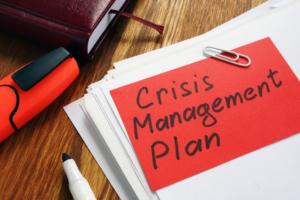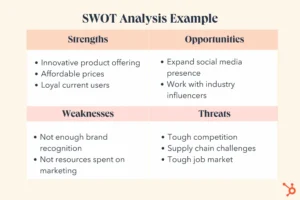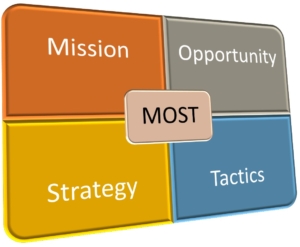
SWOT Analysis and Issue Audits Explore Organizational Weaknesses and Risks
There are two widely used planning tools – SWOT analysis and issue audits. They are similar but not the same. SWOT analysis works work best for strategic planning and issue management, while issue audits are better suited to crisis preparation and risk reduction.
SWOT stands for Strengths, Weaknesses, Opportunities and Threats. A well-constructed SWOT analysis explores internal and external factors that can impact an organization and its success and provide the basis for a strategic plan or an initiative to get ahead of an emerging issue..

An issue audit involves a granular examination of specific issues that could result in a crisis situation. A well-designed issue audit also can uncover issues that could be eliminated or mitigated through management action.
SWOT analysis and issue audits both examine vulnerabilities and threats. Choosing which tool to use centers on the desired goal.
The goal of a SWOT analysis is to identify a lane to navigate market conditions, operational stability and long-term sustainability. SWOT is also a good tool to look over the horizon for emerging issues that can inform proactive issue management.
The goal of issue audits is to identify potential crisis situations, including how they could start, what kind of response would be needed and what advance planning is warranted . Issue audits inform crisis plans as well as management actions to reduce risk before it results in a crisis.
PR consultants often have preferences of which tool to use. Their preference is usually based on their experience. It pays to questions consultants about the choice they recommend and how it relates to the problem being addressed.
SWOT Analysis
The process for a SWOT analysis typically follows this order: Identify an objective, identify strengths, identify weaknesses, consider opportunities and contemplate threats. Strengths, weaknesses, opportunities and threats are each placed in a square with four quadrants.
 The group exercise involves filling in the squares by identifying internal and external strengths, weaknesses, opportunities and threats. The completed SWOT square provides a useful picture of what a strategic plan must address. The square also can offer a glimpse of chronic, emerging or potential issues that must be monitored or addressed.
The group exercise involves filling in the squares by identifying internal and external strengths, weaknesses, opportunities and threats. The completed SWOT square provides a useful picture of what a strategic plan must address. The square also can offer a glimpse of chronic, emerging or potential issues that must be monitored or addressed.
Common internal factors include financial resources, physical resources, human resources, access to natural resources and current process. External factors include market trends, economic trends, funding, demographics, supplier relationships, environmental factors, government regulation and political issues.
SWOT analysis findings can become recommendations or the basis for a strategic initiative that leverage strengths and minimize or overcome weaknesses. Many organizational leaders view SWOT analysis as a guide to decision-making for a specific business decision or to assess a business opportunity.
“It is impossible to accurately map out a business future without first evaluating it from all angles, which includes an exhaustive look at all internal and external resources and threats,” says Bonnie Taylor, chief marketing officer at CCS Innovations. “A SWOT accomplishes this in four straightforward steps that even rookie business owners can understand and embrace.”
 SWOT-Like Analysis
SWOT-Like Analysis
There are other similar analytical tools. PEST analysis follows the same process as SWOT, focusing on political, economic, social and technological issues. MOST analysis centers on mission, objective, strategies and tactics. SCRS analysis involves strategy, current state, requirements and solution.
These different forms of strategic analysis may be follow-up reviews to a SWOT analysis or be targeted at specific issues, products or conditions. Their individual and collective value is to put a problem, opportunity or decision into a broader strategic framework that can inform decisions.
Issue Audits
Issue audits are often conducted under the auspices of an organization’s legal counsel to encourage candor and ensure confidentiality. The idea is to suss out every potential risk and vulnerability that could erupt into a crisis – including those that management may like to ignore.
 With no crevice off limits, a representative cross-section of organizational leaders reviews activities that could be disrupted by accident or on purpose. The audit follows the contours of an organization’s activities. An industrial helicopter company will have different challenges than an international children’s welfare organization. As part of the issue audit, identified challenges are rated as to the probability of occurring and the seriousness if they do occur.
With no crevice off limits, a representative cross-section of organizational leaders reviews activities that could be disrupted by accident or on purpose. The audit follows the contours of an organization’s activities. An industrial helicopter company will have different challenges than an international children’s welfare organization. As part of the issue audit, identified challenges are rated as to the probability of occurring and the seriousness if they do occur.
The inventory of risks and vulnerabilities generated by an issue audit provides the grist for developing a crisis plan built on a foundation of specific crisis scenarios. No generic crisis response will work for an environmental spill or an embezzlement.
The relevance of crisis plans can be maintained by follow-up issue audits that update previously identified risks and add new or emerging risks such as cyberattacks or AI-generated disinformation.
A byproduct of a candid issue audit is a discussion of how some risks could be eliminated or mitigated through updated environmental controls, better worker training or state-of-the-art computer security.
The value of an issue audit is helping an organization understand its risks and vulnerabilities, prepare to respond to potential crises and take steps to reduce risk. That’s the reason risk insurers often pay for issue audits as an investment in risk-avoidance.
DIY Organizational Analysis
Experienced public affairs professionals are well-suited to conduct SWOT analysis and issue audits. A team with public affairs background and business experience is optimal to take a SWOT analysis and convert its findings into a strategic plan. A public affairs professional working with someone with operational expertise could be the perfect team to translate an issue audit into a relevant and actionable crisis plan.
A professional can bring an outsider’s perspective and relevant experience to a SWOT or issue audit that can empower an analysis and challenge internal biases and blind spots. Even when a professional is managing the analysis or audit, it helps to have an internal champion who stresses the importance of taking stock in support of strategic direction or reputational protection.
 Predictive Tools
Predictive Tools
SWOT analysis and issue audits mostly survey existing realities and their likely extensions. They aren’t intended as tools to predict the future. Anticipating the future can be a useful guide for the present, but only if projections are accorded serious attention.
Two examples. Tektronix faithfully employed a futuristic tool that mirrored its sprawling interest in how to apply core technologies. Somehow that look into the future failed to notice the galactic shift from analog to digital test equipment. Missing the shift had a massive impact on the fortunes of the pioneering tech company.
I spoke to a conference of retail businesses that included a large number of fast food franchisees. I began by asking how many restaurant operators had seen Super Size Me. No one raised their hand. Shortly after its release, the film led fast food chains to post nutritional information, use less salt in their recipes and add more salads on the menu in response to changed customer eating preferences.
Predicting the future is more about possibilities than accuracy. One of its best uses is to conjure potential innovations. During the height of Tektronix’ financial fortunes, an engineer wandered around corporate headquarters showing anyone who would stop a computer chip in the palm of his hand that he said was as useful as an oscilloscope. Few listened or understood the power of what his hand-held device. Sometimes the best view into the future is with your own two eyes.
“If I had a magic wand, the one thing
I would eliminate is over-confidence.”
Anticipatory Thinking
Anticipatory thinking is described as a critical macro-cognitive function for individuals and teams to prepare for problems and opportunities. It’s a review aimed at potential events, including low-probability high threat events, not simply the most predictable events.
In a paper written by Gary Klein, David Snowden and Chew Lock Pin, anticipatory thinking is described as “active attention management – focusing attention on likely sources of critical information.“ “It is a form of sensemaking,” they write. “It is this future-oriented aspect of sensemaking that interests us here – anticipatory thinking.“
 This line of thought has spawned new tools, many based on artificial intelligence, to support anticipatory thinking and active attention management. “The key to thriving amid hyper-change and growing uncertainty is developing a new competency: The ability to accurately anticipate the future,” explains Daniel Burrus, a recognized technology forecaster and strategic adviser. “This may sound impossible, but the future is visible if you know how to look for it.”
This line of thought has spawned new tools, many based on artificial intelligence, to support anticipatory thinking and active attention management. “The key to thriving amid hyper-change and growing uncertainty is developing a new competency: The ability to accurately anticipate the future,” explains Daniel Burrus, a recognized technology forecaster and strategic adviser. “This may sound impossible, but the future is visible if you know how to look for it.”
Writing in a forward to a book about anticipatory analysis, the late Nobel economist Daniel Kahneman said anticipatory thinking should take into account the irrationality of consumers. One of the founders of behavioral economics, Kahneman, who held a doctorate in psychology, explored “counter-factual thinking”, in which people imagine different outcomes of past events that influence their response to current events.
In an unrelated interview, Kahneman said if he had a magic wand, the one thing he would eliminate in humans is “over-confidence”.




